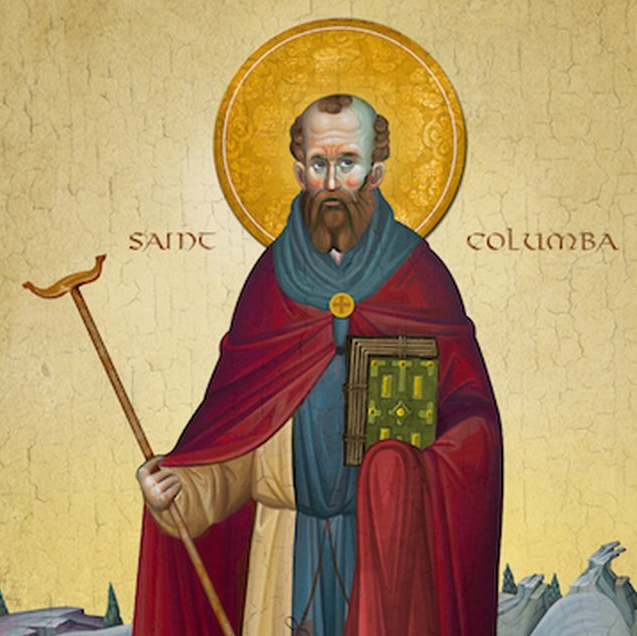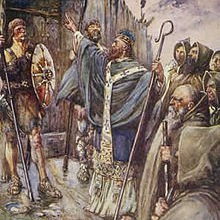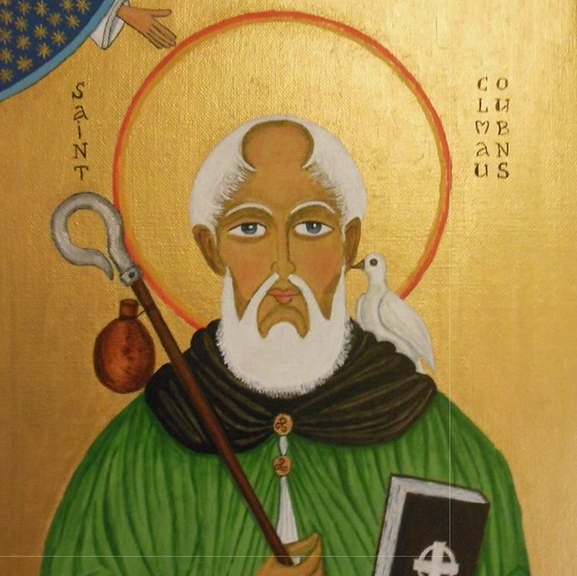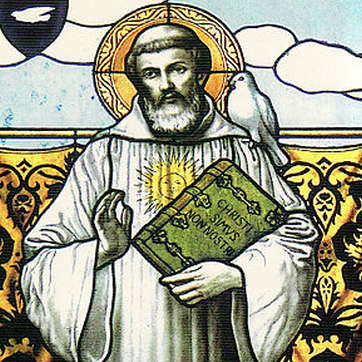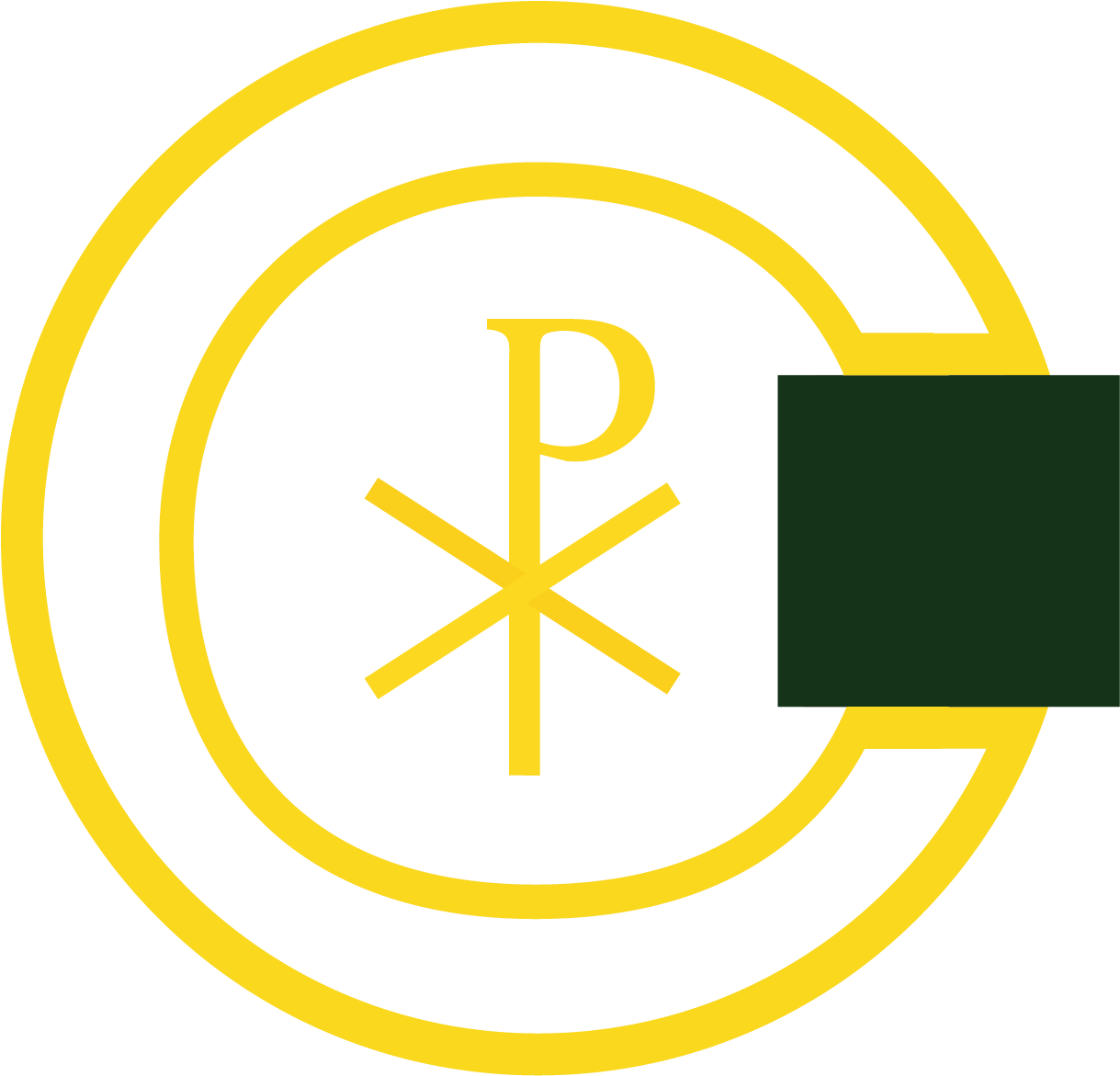Our Patron Saint
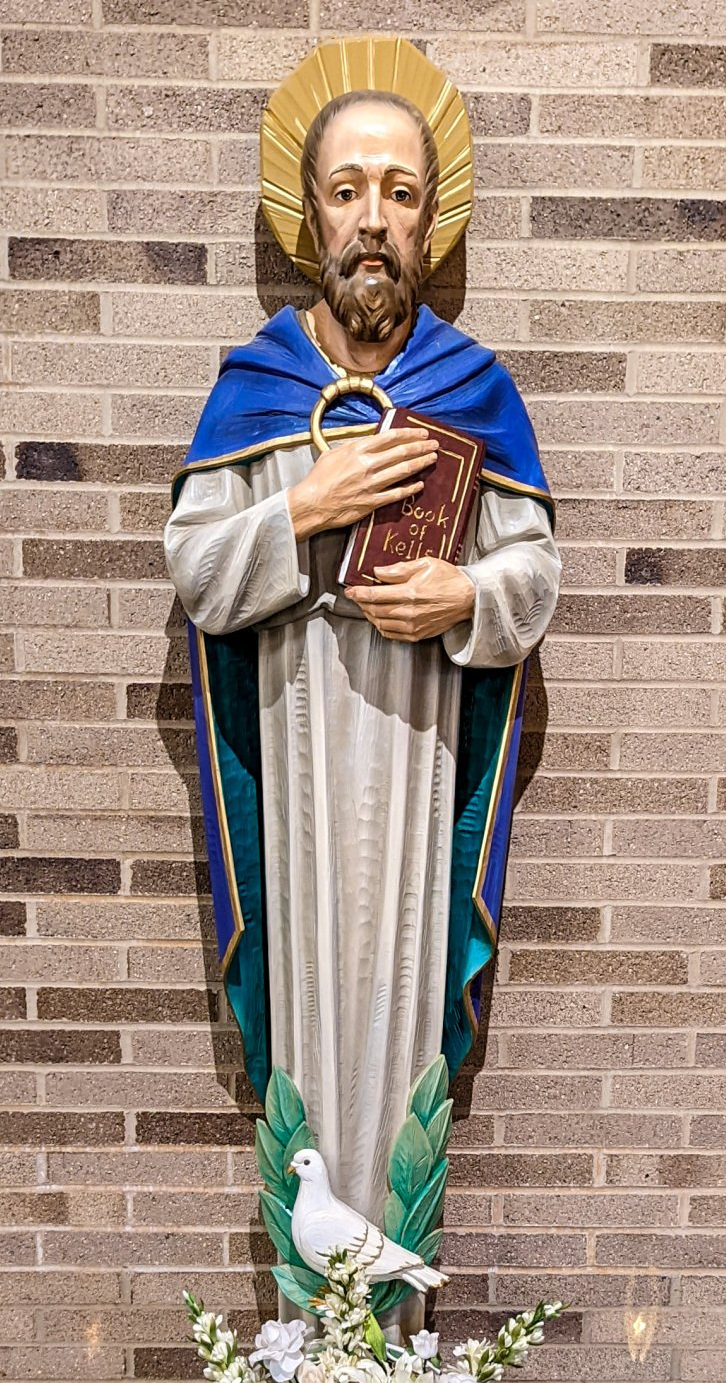
A Poet, Statesman, & Scholar
The man who would become St. Columbkille of Iona was born on December 7, 521 at Garton, County Donegal, Ireland. His parents were Fedlimidh and Eithne of the House of Ui Neill or O'Neill. He was of royal descent, being on his father's side a great-great-grandson of Niall the Great, of the Clan O'Donnell, and Irish high king of the fourth through fifth centuries.
His name was given at Baptism was Colum, which signifies a dove, and he came to be known by a Latin variation of his name, Columba. Columba lived in the small village of Glencolmcille for roughly 5 years. It was later named after him.
At an appropriate age, Columba entered a monastic school at Moville on the shores of Galloway that was headed by St. Finnian. Here he became acclimated to the monastic way of life and received his diaconate, conferring on him the rank of deacon. It is said that while at Moville, his personal sanctity showed itself through miracles.
After leaving Moville, Columba later entered the monastery at Clonard Abbey on the River Boyne in county Meath. This included a group who became known as the Twelve Apostles of Ireland. Columba was one of them. While at Clonard, Columba was elevated to the position of priest by Bishop Etchen of Clonfad.
His advance through religious life brought changes to his name as he became known variously as Colm Cille, Columcille, or Columbkille. The suffixes mean in Old Irish "of the church." When added on to his original baptismal name Colum, his name comes to literally mean "Dove of the Church." His eventual lasting and permanent name, Columbkille, is likely a Gaelic version, Gaelic being a Celtic dialect of the Scottish and Irish languages.
In 544, Columba (Columbkille) returned to the home of his family in Ulster. He established monastaries at Derry in 545, Durrow in 553, and Kells in 554.
In 563 at age 41, Columbkille and twelve companions set out on the sea between Ireland and Scotland in a currach, a skin boat made of wickerwork covered in hides. On the eve of Pentecost May 12, 563, they landed on the island of Iona. This island has been granted for use as a monastic colony by King Conal of Dalriada, a relative of Columbkille, and was destined to become the great religious center for Scotland and northern England. Columbkille and his group initially constructed some basic buildings - a church, refectory (dining hall), and living quarters - built of rough planks and wattles, which are interwoven sticks, twigs, and branches.
Columbkille then spent several years working among the Scots of Dalraida and then turned his attention towards the major long term effort of his life - the conversion of the Northern Picts of Caledonia. The Picts were an ancient people of Great Britain driven to Scotland by the Britons and Romans. There was some opposition from the Druids, an ancient Celtic religious order including priests, poets, judges, and soothsayers (predictors of the future) that were active in France, Britain, and Ireland. However, their influence among the people was waning and they were being displaced by the advance of the new Christianity of Medieval times now spearheaded by Columbkille.
He spent the remaining 32 years of his life spreading the teaching of Christianity throughout Northern Scotland, performing miracles, and establishing a number of churches and monasteries. While not on missionary journeys, he stayed at Iona where it is said that many strangers visited him, seeking help for both body and soul.
The story of Columbkille includes the earliest mentions of the fabled Loch Ness Monster. According to a biographer named Adomnan, Columbkille came across a group of Picts who were burrying an unfortunate man who had been killed by the monster. He then saw a swimmer in the river being pursued by the monster, and making the sign if the cross he commanded, "You will go no further!" At this, the monster turned and fled in terror, much to the amazement of the Picts who had witnessed it. There is, of course, no independent historical confirmation of this legend, bit it is noted that Adomnan's account specifies that at the time of its encounter with Columbkille, the monster was in the River Ness which flows from the Loch and not in the Loch Ness itself.
Columbkille is said never to have spent an hour not in study, prayer, or writing. He wrote 300 books. Two of these, "The Book of Durrow," and a psalter called "The Cathach" remain preserved.
It appears in the spring of 597, at the age of 75, he sensed that the end of his lifetime was nearing. On Saturday, June 8th, he climbed the hill overlooking his monastery and blessed it for the last time. He was at Vespers in the afternoon. When the bell later summoned the community to the midnight services, he declined the aid of others and entered the church without assistance. He sank before the alter and died surrounded by his disciples. This was just after midnight on early June 9th. His feast day is therefor observed in both Scotland and Ireland on June 9th.
The monks buried him on the monastery grounds. A century or more later, he was disinterred and reburied at a shrine created for him. However, as the Northmen and Danes invaded the island of Iona several times, the monks removed Columbkille's relics, for safety purposes, to Ireland where they were reinterred with those of St. Patrick and St. Brigid at Downpatrick.
Tradition tells us that Columbkille was tall and of dignified demeanor. Biographer Adamnan, one of his successors at Iona, says of him, "He was angelic in appearance, graceful in speech, holy in work." His voice was strong and could at times be heard at long distances. He. was known for humility and his charity towards all, friends and strangers alike. He would sympathize with both the joys and sorrows of others and was generous, warm-hearted and tender not only to people, but to animals as well. Columbkille, along with St. Patrick and St. Brigid, are the three patron saints of Ireland. He is also a patron saint of Scotland.


